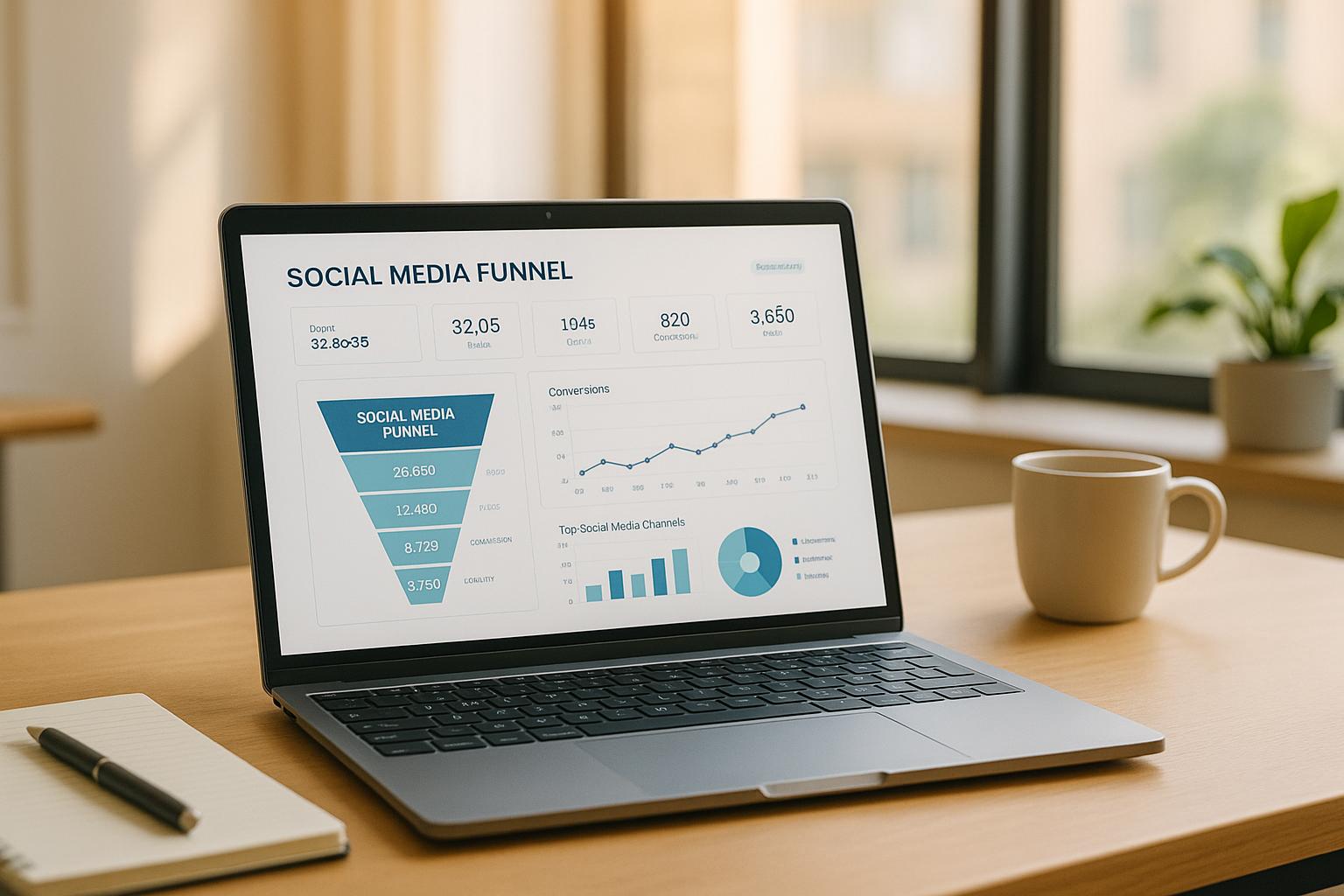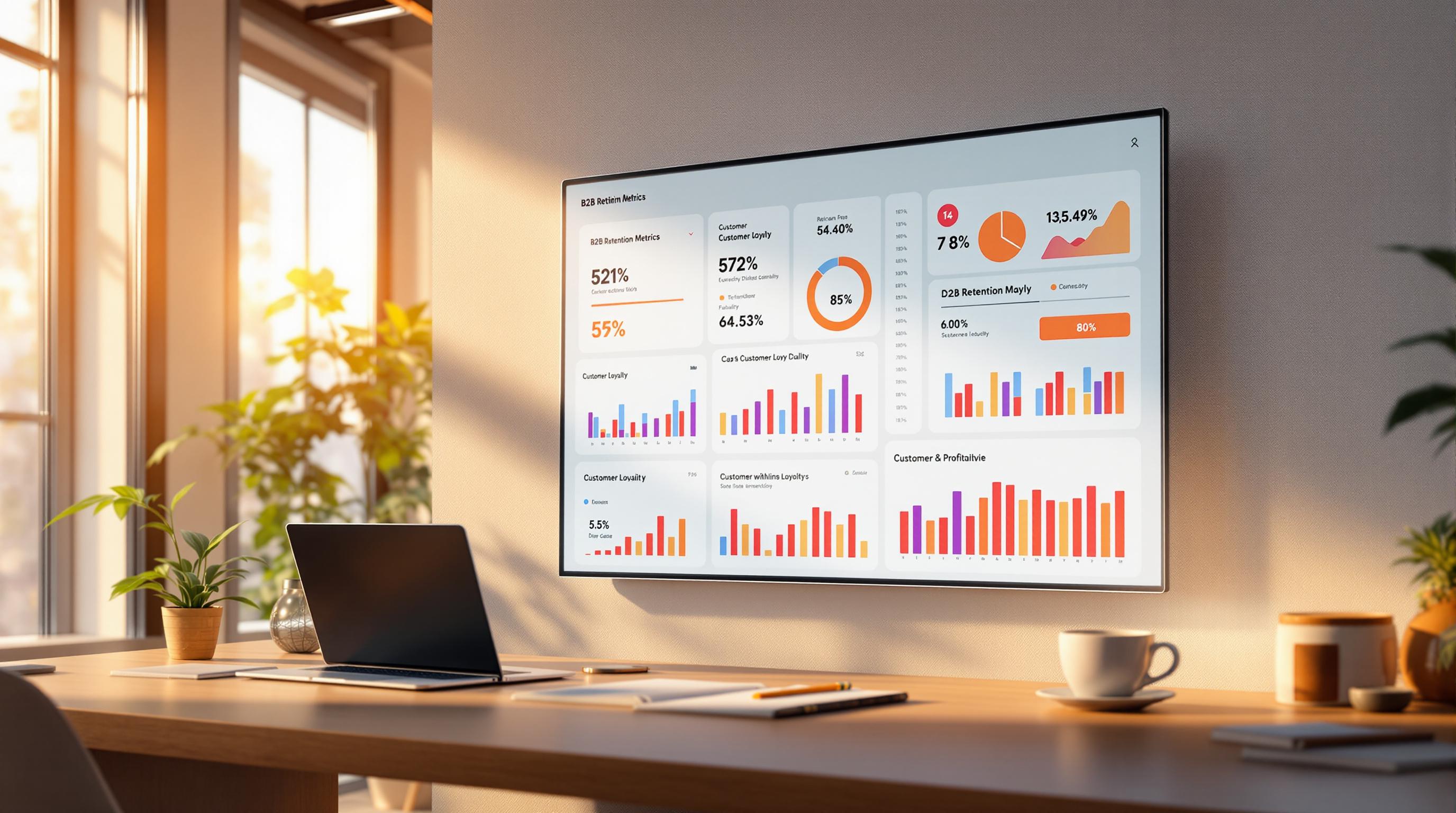AI is transforming B2B marketing by delivering tailored experiences that meet buyers' growing expectations. Here's why it matters and how it works:
- B2B buyers demand personalization: 80% expect personalized experiences, and 86% want companies to know their preferences.
- AI solves key challenges: It automates data unification, real-time behavioral analysis, and content creation, addressing issues like scattered data, complex buyer journeys, and limited resources.
- Proven results: Companies using AI for personalization report up to a 15% revenue boost and higher engagement rates.
Top tools include:
- Demandbase: Focused on account-based marketing with AI-driven insights.
- Drift: Real-time conversational AI for lead engagement.
- 6sense: Predictive analytics to identify high-intent buyers.
- PathFactory: AI-powered content recommendations.
AI simplifies and scales personalization, making it essential for B2B success. Start small, focus on one area of your funnel, and choose tools that align with your goals.
Scaling B2B Marketing for Enterprises Using Gen AI
Problems with Standard B2B Funnel Personalization
While personalization has clear advantages, many B2B companies struggle to make it work effectively at scale. Traditional methods often lead to more headaches than results, leaving marketing teams frustrated and prospects uninterested. Here are three major issues that undermine conventional personalization strategies.
Generic Messages Miss the Mark
One of the biggest flaws in standard B2B personalization is that it’s not truly personal. Many companies rely on templated messages that feel impersonal and irrelevant to busy decision-makers. These cookie-cutter communications are easy to spot, and most recipients tune them out immediately.
B2B buyers are quick to dismiss irrelevant messages. With inboxes flooded by sales emails, LinkedIn messages, and marketing materials, generic outreach blends into the background noise. Instead of standing out, these efforts often appear as spam.
Automation tools often make this worse. Companies use these tools to send broad, generic messages to large audiences, failing to address the specific needs of decision-makers.
"Your sales don't die from silence. They die from irrelevance. And generic outreach is the fastest way to get there." - Only B2B | Lead Generation & Marketing
The consequences of this approach can’t be ignored. Organizations with unified sales and marketing messaging see a 67% increase in conversion rates and close deals 36% faster. Yet, many companies continue sending one-size-fits-all emails that rarely convert.
Another common misstep is assuming every prospect is ready to buy immediately. Generic messages often dive straight into product details or pricing without considering where the buyer is in their journey. This approach slows progress because buyers expect you to understand their challenges before pitching a solution.
"If your content is not hyper-personalized to the receiver, you (& the Brand) instantly lose credibility, trust and are reduced to 'just another spam' sender. Personalize the journey and the experience, results will follow." - Sandeep Satarkar, Full Funnel Sales Enablement Partner
This lack of personalization also makes it harder to identify high-intent leads.
Struggling to Identify High-Intent Leads
Generic messaging doesn’t just hurt engagement - it also makes it nearly impossible to pinpoint prospects who are ready to take action. Without proper data integration and analysis, marketing teams treat all leads the same, missing opportunities to prioritize high-intent buyers.
A major challenge is data scattered across multiple systems, which prevents teams from gaining a unified view of customer behavior. Without this clarity, segmentation suffers.
Poor segmentation leads to mistargeted messages, frustrating potential customers and eroding trust. This wastes resources and damages relationships with prospects.
The statistics are telling: 76% of customers feel frustrated when marketing efforts miss the mark, and 79% of marketing leads never convert into sales due to weak or nonexistent follow-up. Without the ability to identify high-intent signals, marketing teams can’t focus their efforts effectively.
Real-world examples highlight these challenges. HSBC faced backlash when automated email campaigns sent irrelevant offers to premium clients due to poor segmentation. IBM also struggled when their account-based marketing strategy targeted only IT managers, overlooking key decision-makers in procurement and finance, which delayed deal closures.
Misguided efforts waste resources on prospects who are unlikely to buy, a particularly costly mistake in B2B environments where sales cycles are long and budgets are limited. The complexity of B2B buying journeys adds another layer of difficulty. A typical buying group involves 6 to 10 stakeholders, each consulting four to five sources of information that must be reconciled. Standard personalization methods simply can’t keep up with these dynamics.
Manual Personalization Can’t Scale
Another major limitation of traditional B2B personalization is that manual efforts don’t scale as businesses grow. While tailoring content manually might work for a handful of high-value prospects, it quickly becomes unmanageable as the target audience expands.
Most companies lack the time and budget to manually assess data for every prospect. Crafting unique content for various buyer personas and funnel stages drains resources, pulling teams away from strategic priorities.
This scalability issue compounds the problems of generic messaging and poor lead identification, ultimately stalling funnel performance.
The numbers are clear: Only 4 out of 10 B2B marketers feel they use personalization effectively, despite the fact that 77% of B2B buyers won’t make a purchase without personalized content. The gap exists because manual methods simply can’t keep up with demand.
Data management is a major hurdle, as manual processes for collecting, analyzing, and acting on customer data are slow and error-prone. By the time teams complete segmentation and create personalized content, the opportunity may have already passed.
B2B buying decisions are inherently complex. 73% of business buyers expect customized interactions, and 77% of B2B buyers describe their purchase journey as very complex. Manual approaches can’t handle this level of complexity across multiple prospects at the same time.
Over-reliance on automation without human oversight leads to generic messaging, while manual efforts create bottlenecks that prevent scaling. Teams are stuck choosing between personalizing for a few prospects or reaching many with generic messages.
The resource strain becomes even more evident when considering that 95% of buying groups revisit decisions as new information surfaces. Manual methods can’t adapt quickly enough to these shifting requirements.
Another issue is targeting. Focusing on a single contact within a target organization often fails, as B2B buying decisions typically involve multiple stakeholders. Manual methods make it nearly impossible to track and personalize for all decision-makers involved.
Ultimately, marketing teams either burn out trying to manually personalize or resort to ineffective generic outreach. This leaves businesses trapped between two unworkable options, unable to achieve meaningful results.
How AI Tools Fix B2B Funnel Problems
AI tools are transforming how B2B companies tackle common funnel challenges. By leveraging machine learning, these tools process massive amounts of data in real time, enabling precise audience segmentation and scalable personalization. It's no surprise that AI adoption in marketing has surged - from 55% to 72% by 2024 - with 37% of professionals using it daily and 34.1% of marketers reporting measurable improvements in their strategies.
AI Creates Better Audience Segments
Traditional methods of audience segmentation - like surveys and manual data analysis - are slow, prone to errors, and often fail to capture the complexity of buyer behavior. AI, on the other hand, can analyze intricate patterns in customer behavior, interests, and purchase intent in seconds rather than days.
Where traditional approaches rely on static data and fixed rules, AI adapts dynamically, learning from evolving data to refine its predictions. This means marketers can identify high-intent prospects before they even display obvious buying signals, giving sales teams a huge edge. For example, AI can predict future behaviors based on historical data, something manual methods simply can't match.
AI's ability to adapt to uncertainty is another game-changer. Unlike traditional systems that require manual updates, AI learns automatically as new data flows in, continuously improving its accuracy and relevance without additional human input.
AI Automates Real-Time Personalization
Personalizing customer interactions in real time used to be nearly impossible with manual methods. But AI has made this a standard practice, analyzing customer behavior instantly to tailor outreach efforts at scale.
This approach pays off. Fast-growing companies using personalization report up to 40% higher revenue, while a well-executed personalization program can cut customer acquisition costs by half. Companies prioritizing the customer experience often see their revenue grow three times faster than their competitors.
Brands like Adobe, HubSpot, and LinkedIn show how real-time AI-driven personalization boosts engagement and ROI. For instance, 82% of organizations using AI to enhance customer experiences report returns of five to eight times their marketing spend. Additionally, 78% of customers are more likely to make repeat purchases when they feel understood, underscoring the importance of tailored interactions.
To make the most of AI, marketers should start small, focusing on areas where it can have the greatest impact. Jamie Pagan, Director of Brand & Content, offers a helpful analogy:
"AI in marketing is like protein powder in nutrition - it's a powerful supplement, not a magic fix. It helps scale what already works, making strong strategies even stronger, but it won't turn bad marketing into good marketing."
By enabling instant, data-driven personalization, AI empowers B2B marketers to connect with high-intent leads more effectively, a critical advantage in today’s competitive landscape.
AI vs Standard Methods Comparison
When comparing AI-driven personalization with traditional approaches, the differences in speed, scalability, and efficiency are striking. Here's a quick breakdown:
| Feature | AI-Driven Personalization | Manual Personalization |
|---|---|---|
| Speed | Executes in milliseconds | Time-intensive |
| Scalability | Handles complex segments effortlessly | Limited, requires heavy manual effort |
| Efficiency | Cuts costs and boosts conversions | Resource-heavy and expensive |
| Learning | Learns and adapts in real time | Relies on static rules, needs frequent updates |
For growing B2B companies, scalability is crucial. As audience segments grow more intricate, manual methods become unsustainable, requiring constant updates and validation. AI systems, however, adjust automatically, learning from fresh data and refining their personalization strategies without extra effort.
The results speak for themselves: B2B companies using AI often see conversion rate increases of 10–30%, along with improved retention rates. These gains can translate to an 800% ROI on marketing spend. For example, companies employing personalized content strategies retain 10% more subscribers year-over-year. Given the high cost of customer acquisition and long sales cycles in the B2B world, these improvements can significantly impact overall profitability.
AI isn’t just automating personalization - it’s redefining it. By turning tailored experiences into a must-have rather than a luxury, AI helps B2B companies meet modern buyer expectations while keeping their operations efficient and scalable.
sbb-itb-a84ebc4
Best AI Personalization Tools for B2B Funnels
After exploring how AI tackles common personalization challenges, it's clear that certain tools are transforming B2B funnels. The key isn’t just finding AI-powered platforms - it’s choosing ones that align with your goals and integrate smoothly with your existing systems. Below are some standout AI personalization tools that are delivering impressive results for B2B companies.
Demandbase: AI for Account-Based Marketing
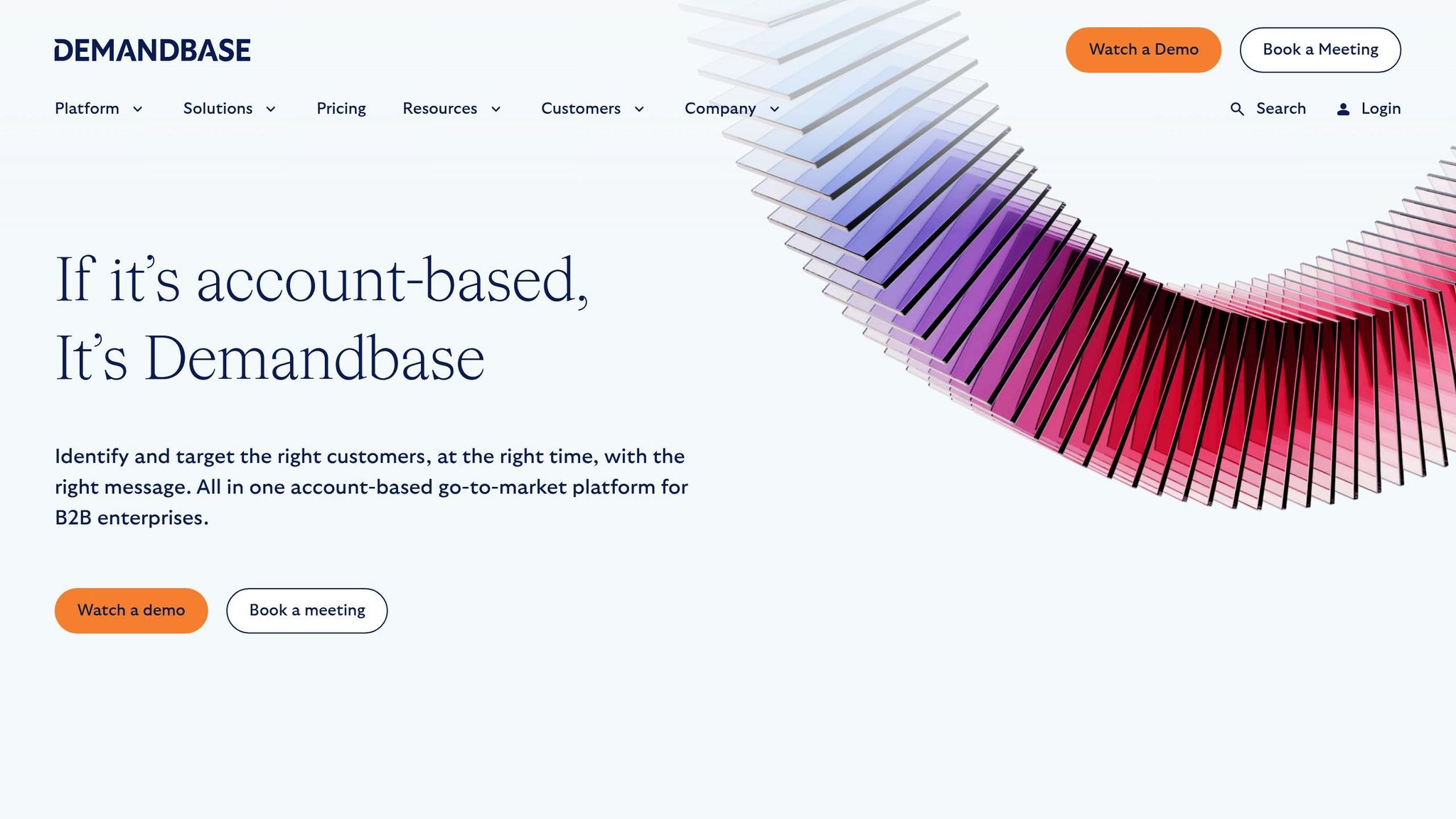
Demandbase is a powerful platform built for account-based marketing (ABM). It uses AI analytics and deep integrations to identify high-value accounts and run personalized campaigns across multiple touchpoints.
For instance, Adobe saw a 3x increase in visitor-to-lead conversions by using Demandbase’s AI-driven account intelligence. The platform can also de-anonymize up to 90% of website visitors who would otherwise remain unidentified.
Some of its standout features include AI-powered account scoring, intent data analysis, and automated campaign orchestration. As Wendy H., a G2 reviewer, puts it:
"Demandbase One automates the hours you would normally spend searching for potential candidates".
Pricing starts at $20,000 annually and can exceed $100,000 depending on your needs. Custom quotes are available through demos.
Drift: AI Chat for Real-Time Engagement
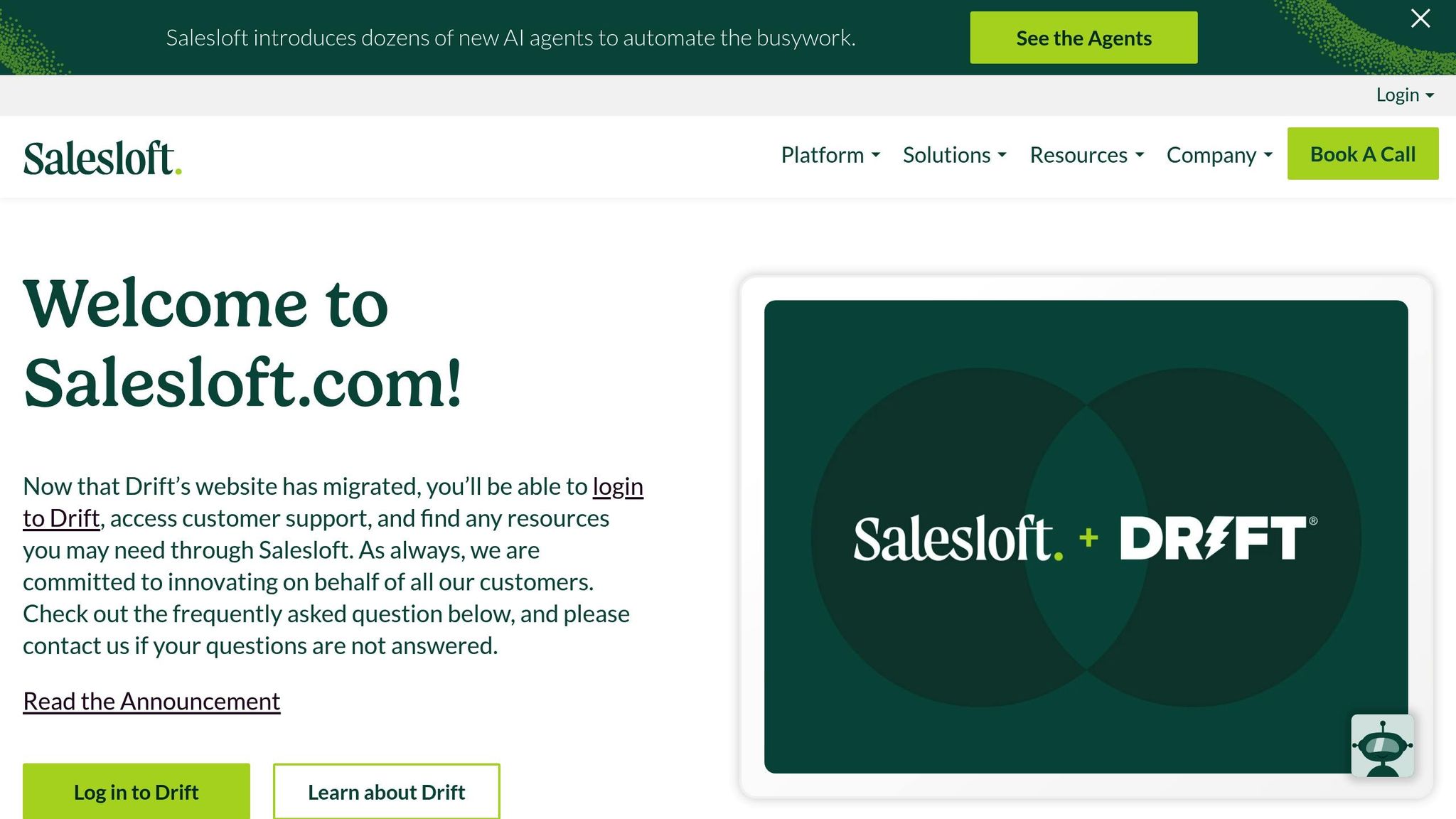
Drift specializes in conversational AI, making real-time engagement seamless. Its chatbots qualify leads instantly, schedule meetings, and offer personalized recommendations based on visitor behavior.
A major challenge in B2B funnels is that only about 3% of web visitors complete forms. Drift addresses this by engaging the remaining 97%, converting anonymous traffic into qualified leads. By analyzing visitor behavior, Drift tailors its interactions based on company size, industry, and engagement level, helping sales teams connect with prospects at the perfect moment.
Pricing for Drift starts at around $8,000 annually, making it a cost-effective choice for businesses focused on real-time customer engagement. It also integrates easily with CRM and marketing automation tools.
6sense: Predictive Analytics and Intent Tracking
6sense uses predictive AI to identify potential buyers before they even show clear intent. The platform excels at detecting subtle buying signals with an 87% accuracy rate - far outpacing traditional methods, which average just 36%.
Companies like Ceros have seen a 72% boost in meeting-to-SQL conversions using 6sense. Meanwhile, Morningstar achieved its pipeline and revenue goals by leveraging the platform’s predictive capabilities. With only 5–7% of target accounts actively in the market at any time, 6sense ensures you’re reaching them early.
Users report a 77% increase in lead-to-opportunity conversion rates, and predictive campaign orchestration can cut marketing costs by 27% while improving response rates by 43%. Pricing for 6sense starts at $50,000 annually and can reach up to $250,000 for enterprise plans.
PathFactory: AI-Driven Content Recommendations
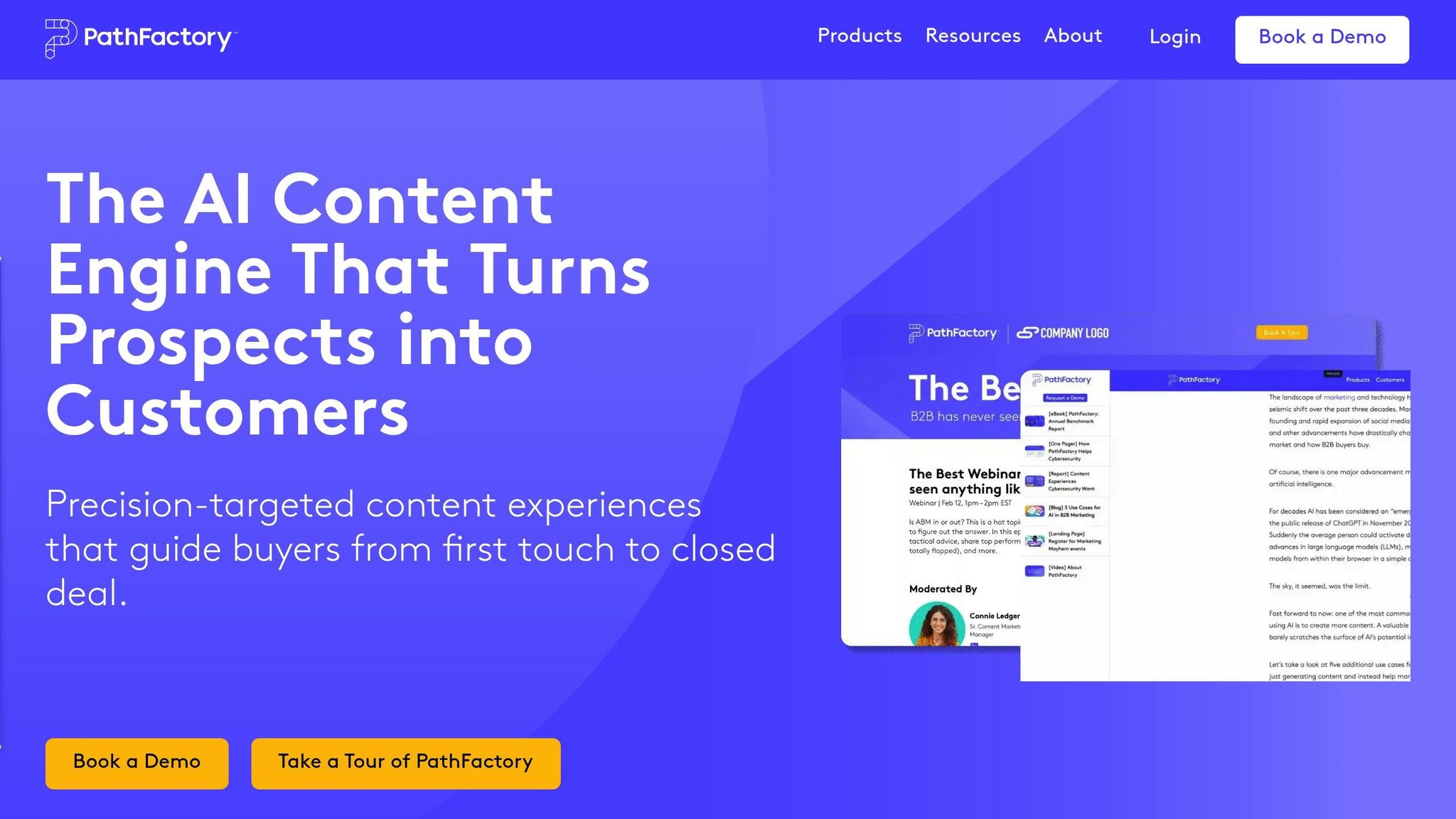
PathFactory streamlines content marketing by using AI to recommend the most relevant materials for each prospect. By analyzing visitor behavior, it guides buyers through the decision-making process typical of B2B sales.
Key features include dynamic content scoring, personalized content tracks, and behavioral analytics that reveal which assets drive conversions. It also integrates with marketing automation platforms, enabling more precise lead scoring and nurturing.
PathFactory’s pricing ranges from $15,000 to $50,000 annually, making it accessible for companies focused on content-driven lead generation.
Tool Feature Comparison
| Tool | Best For | Key AI Features | Annual Investment | Integration Strength |
|---|---|---|---|---|
| Demandbase | Enterprise ABM | Account intelligence, visitor de-anonymization | $20k–$100k+ | Strong CRM integration |
| Drift | Real-time engagement | Conversational AI, lead qualification | $8k+ | Strong chat/CRM connectivity |
| 6sense | Predictive analytics | Intent detection, account scoring | $50k–$250k | Comprehensive data platform |
| PathFactory | Content personalization | Content recommendations, journey mapping | $15k–$50k | Content/automation focus |
Each tool addresses a specific challenge in B2B funnels. Demandbase is ideal for enterprise-level ABM, Drift excels in real-time engagement, 6sense leads in predictive analytics, and PathFactory shines in content personalization. Many companies find success by combining several of these tools to tackle different aspects of their funnel strategy.
Using Marketing Funnels Directory for AI Personalization
AI tools have revolutionized B2B marketing funnels, but figuring out the right tools and strategies for personalization can feel overwhelming. While platforms like Demandbase and 6sense offer powerful features, finding the best mix for your specific needs is no small feat. With 89% of top businesses already investing in AI to boost revenue, the question isn’t whether to adopt AI - it’s about choosing the right tools and using them effectively.
That’s where the Marketing Funnels Directory (https://topmarketingfunnels.com) comes in. This resource is designed to help B2B companies simplify their AI personalization strategies. Instead of wasting time searching for solutions, this directory provides a one-stop hub for vetted tools, educational resources, and implementation guidance. Let’s dive into how it can streamline your tool selection and improve your marketing funnel.
Find the Right Tools with the Directory
Just like AI improves funnel performance, the directory simplifies the process of finding the right tools. It offers a curated list of platforms tailored specifically for B2B needs, focusing on features like AI-driven personalization, data visualization, and cross-channel integration. Rather than sifting through countless options, you can quickly compare tools based on their features, pricing, and integrations, making it easier to match solutions to your budget and technical needs.
The directory also highlights platforms with customizable templates and no-code options. These are especially useful for businesses that need to roll out personalization quickly without heavy development work. For example, some funnel builders offer over 200 ready-to-use templates, saving you time and effort during the evaluation process.
Access Learning Materials for Funnel Optimization
The directory doesn’t stop at tool recommendations - it also provides educational resources to help you get the most out of AI. Many companies rush to adopt AI tools but lack the foundational knowledge to use them effectively. That’s a gap this platform aims to fill.
As Jamie Pagan, Director of Brand & Content, puts it:
"AI in marketing is like protein powder in nutrition - it’s a powerful supplement, not a magic fix. It helps scale what already works, making strong strategies even stronger, but it won’t turn bad marketing into good marketing".
This insight highlights why the directory’s learning materials are so important. If your core marketing strategies are flawed, AI won’t fix them - it’ll just magnify the issues. The educational resources cover topics like sales funnel mastery, lead generation, inbound marketing, and digital marketing basics. These materials help you understand how AI works alongside marketing automation to optimize your processes. For instance, AI evolves by learning from data, while automation executes tasks based on instructions. Understanding this distinction is key to crafting effective personalization strategies.
AI Solutions for US B2B Companies
The directory’s resources are particularly valuable for US-based B2B companies navigating the fast-changing world of AI-driven marketing tools. Businesses that combine marketing automation with AI consistently see stronger performance and revenue growth. The platform also accounts for the unique demands of the US market, helping companies leverage AI to predict and influence customer decisions through data-driven insights.
The directory includes real-world examples to show how AI personalization can transform B2B marketing. For instance, PointClickCare, a Healthcare IT company, achieved a 168% increase in chat-generated leads and doubled its chat conversion rate to 2.1% within a month by adopting Lift AI. Another example is Fluke Health Solutions, which saw its average revenue per Intercom conversation jump by 246% and its revenue per site visitor grow by 345% after implementing AI strategies.
These success stories illustrate the tangible results US businesses can achieve with the right tools and strategies. The directory doesn’t just show you which tools to use - it guides you on how to implement them effectively, helping you maximize their impact in a competitive market.
Conclusion: Change B2B Funnels with AI Personalization
AI-driven personalization is becoming a game-changer for B2B companies. A recent study shows that 74% of B2B sales and marketing leaders acknowledge AI is reshaping their businesses. Without embracing these tools, organizations risk losing ground to competitors who are already meeting the demand for tailored experiences.
The numbers speak for themselves: over 75% of companies using AI report better outcomes. Why? AI excels at analyzing vast amounts of data, predicting customer behavior, and automating personalized interactions. These capabilities translate into better engagement, more accurate targeting, and higher conversion rates. As Katie King, an AI expert and strategist, puts it:
"Sales and marketing are fast emerging as major sources of AI value, which is backed by BCG research".
The key to success lies in a thoughtful, strategic approach. Rather than attempting a full-scale overhaul, start small by integrating AI into one part of your sales funnel. This minimizes disruption and allows for focused improvements. Target areas where you can achieve quick wins, such as lead scoring, email follow-ups, content delivery, or audience segmentation. Map out your customer journey, then use AI to personalize messages, predict actions, and automate critical touchpoints. Continuously track metrics like conversion rates, lead quality, and customer feedback to measure your progress and refine your efforts.
For those looking to streamline this transition, the Marketing Funnels Directory offers a collection of tools, resources, and strategies to help you get started. Instead of spending months researching, you can find vetted solutions to transform your B2B funnel into a high-performing system. With AI's ability to deliver real-time personalization, predictive insights, and round-the-clock automation, businesses willing to embrace this technology can gain a significant edge.
FAQs
How do AI tools enhance personalization in B2B marketing funnels compared to traditional methods?
AI tools are reshaping how personalization works in B2B marketing funnels by streamlining tasks and providing real-time insights based on data. Instead of relying on outdated methods with manual effort and generic messaging, AI empowers businesses to craft precise and relevant customer experiences at every step of the funnel.
With the ability to analyze customer behavior and preferences, AI predicts needs, customizes messaging, and fine-tunes engagement strategies. The result? Smarter communication, better conversion rates, and happier customers - making B2B marketing funnels far more effective and efficient.
What challenges do B2B companies face with traditional personalization strategies, and how can AI help solve them?
B2B companies often face hurdles like data silos and fragmented systems, which make it tough to get a clear, unified picture of their customers. On top of that, outdated technology, steep implementation costs, and worries over data privacy add extra layers of complexity to adopting personalization strategies.
AI steps in to tackle these challenges head-on. It consolidates data from various sources, leverages machine learning to automate personalization on a large scale, and boosts customer engagement. By solving problems like inconsistent data and limited resources, AI empowers businesses to create experiences that feel more relevant and meaningful to their customers.
What should businesses look for when choosing AI personalization tools for their B2B marketing funnels?
When choosing AI personalization tools for your B2B marketing funnel, it's crucial to prioritize data privacy and security. This ensures compliance with important regulations like GDPR and safeguards your customer information. Equally important is checking whether the tool integrates smoothly with your existing tech stack while supporting customer data analysis and segmentation for better targeting.
You should also look for features that improve content creation, automation, and customer engagement, as these can significantly enhance the buyer's journey. Lastly, keep an eye on budget limitations and scalability to ensure the tool aligns with both your current needs and future growth plans.
